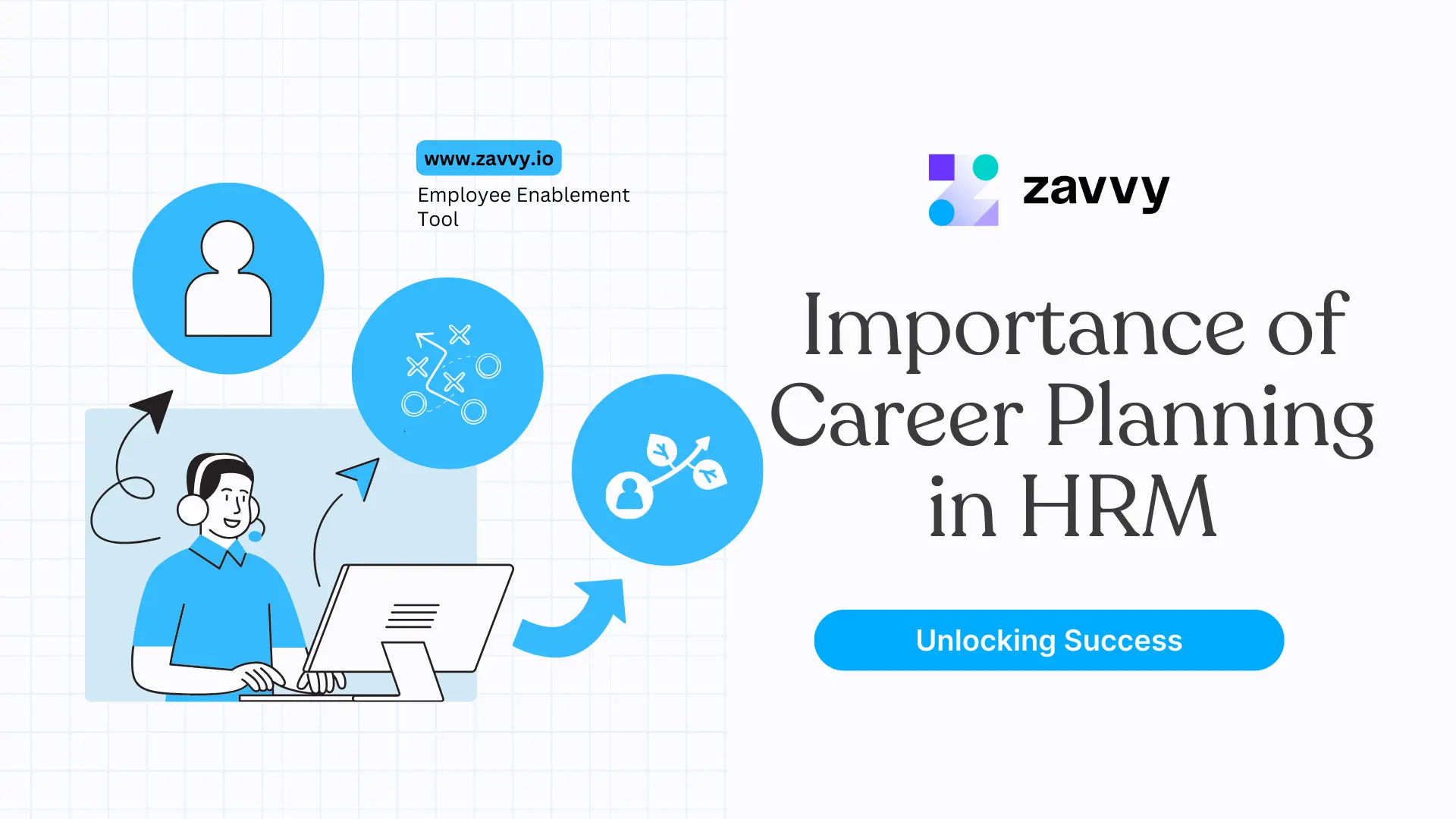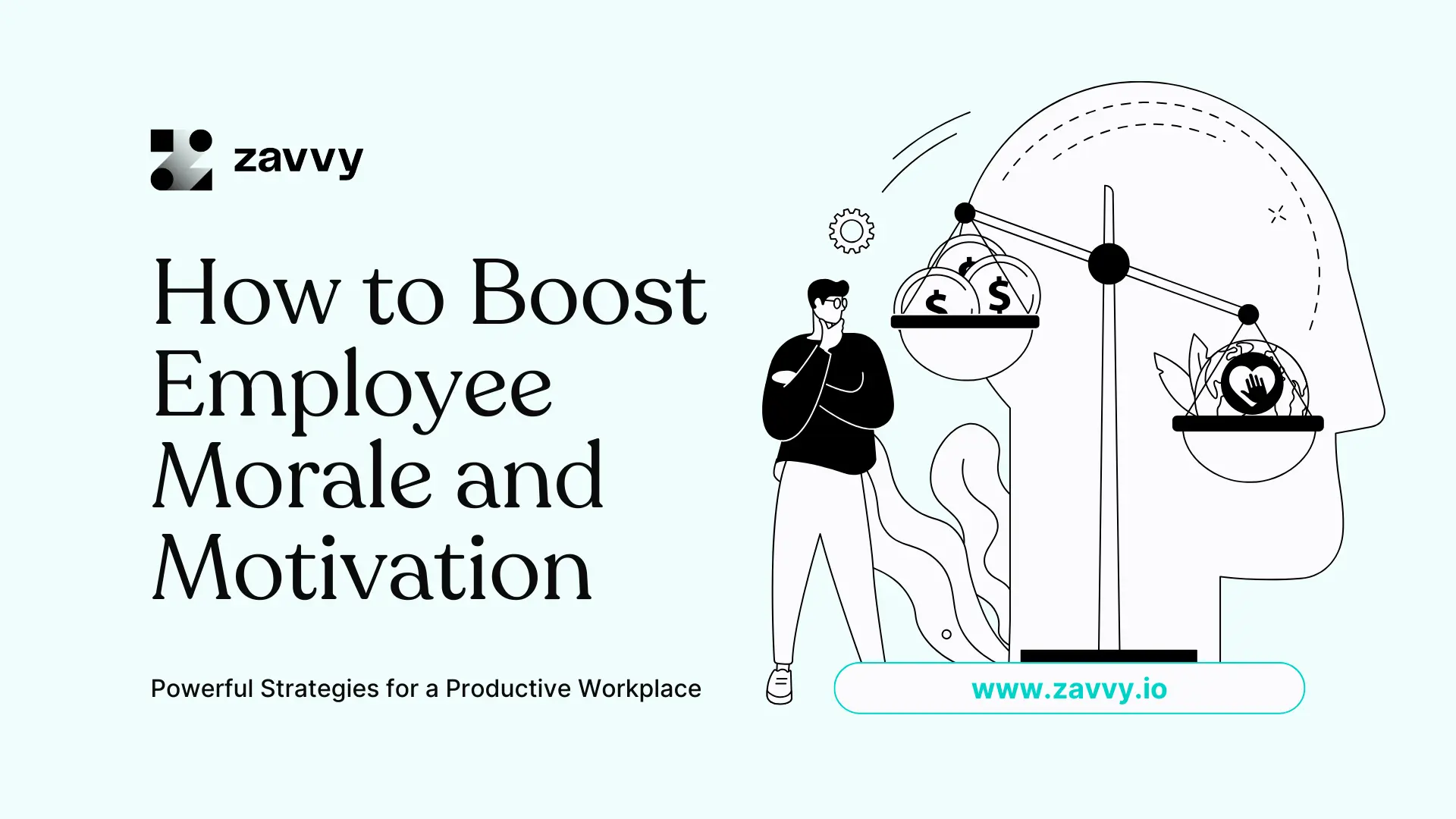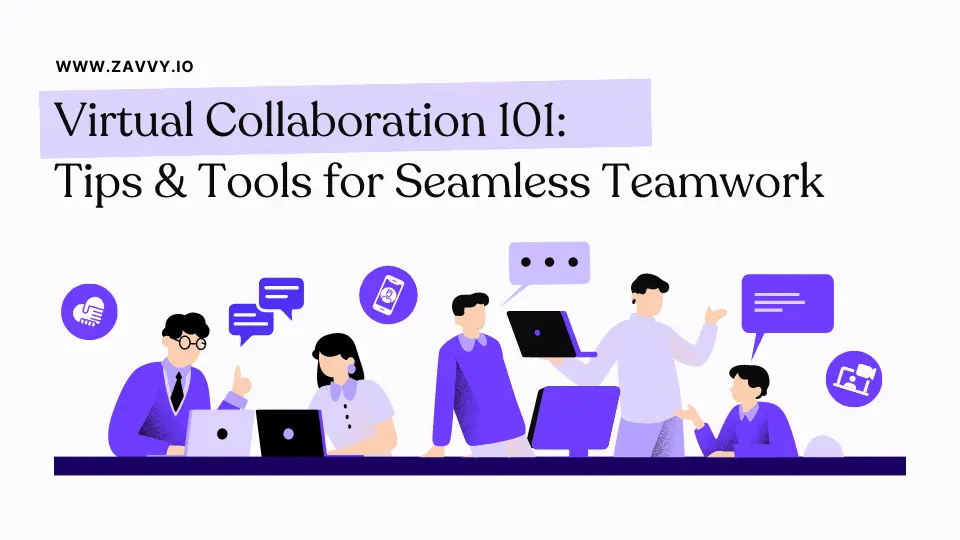
Top 8 Trends in Employee Performance Evaluations Every Company Should Know and Hop on
Zuletzt aktualisiert:
3.1.2024
Lesezeit:
10 minutes
última actualización
3.1.2024
tiempo de lectura
10 minutes
Last updated:
January 3, 2024
Time to read:
10 minutes

Are you a People manager or a business owner dedicated to fostering personal growth, engagement, and satisfaction among your employees?
Then, you should keep up with the trends in employee performance evaluations.
The connection between performance appraisal and employee satisfaction is evident. When companies use objective and consistent methods for appraising employee performance, employees feel better about their jobs.
A company's productivity is a result of the efforts and abilities of its employees.
A performance appraisal allows us to understand:
- The reasons for our employees' performances.
- How we can help them improve or change their behavior.
Employee performance evaluations have developed significantly over the years to stay close to employees and their performance and to keep them engaged.
For these reasons, trends in how employees are reviewed and evaluated will continue to shape and help keep a secure workforce.
Check out our analysis and insightful look at the trends in employee performance evaluations. You'll find some ideas for your people processes.

🔄 The role of employee performance reviews in today's workplace
The best performance reviews provide continuous feedback, promote teamwork and productivity, and help employees improve and reach their full potential.
Employee evaluations improve the individual's performance, company culture, and retention. When you actively promote and support your employees' personal growth and development, they are more likely to remain with your organization long-term.
For example, 360-degree reviews gather feedback from multiple sources to form a more comprehensive picture.
To keep track of your employees' career progress and relieve the pressure on annual performance reviews, give them consistent performance appraisals.
Some of the most important benefits of regular appraisals include:
- Ensuring employees get a clearer idea of performance expectations.
- Allowing managers to gain insight into what motivates their employees.
- Providing an opportunity to discuss any concerns managers may have about employee performance.
- Helping employees plan their career paths and managers assess which employees are most likely to succeed.
- Gaining useful information about business needs to get ahead at work. For example, how well people are doing compared with one another and who deserves a raise or a bonus.
- Enabling employee retention: constructive and specific feedback to your employees makes them feel listened to and appreciated.

Briang Hong, CEO of Big Easy Roofing, comments on regular evaluations at his firm:
"We advocate monthly or quarterly performance discussions, followed by a year-end assessment of broad themes, remarks, progress, and next initiatives. This keeps managers and staff within the same page when it comes to goals, development, and productivity."
➡️ Discover 17 ways to improve employee performance in your organization.
📈 8 Trends in employee performance evaluations
In the modern workplace, employee performance evaluations are necessary to keep your company on track.
But how can you ensure your performance review system helps your people and your business?
These are the trends shaping effective performance evaluations.

🦾 More technology? Yes, please
It's more common today for companies to use technology in their performance appraisal process. With performance review apps, employees can:
- Check the basis on which they are being evaluated.
- Read the reviews they have received from their peers.
- Check the progress based on pre-set goals.
"Conducting traditional 360 surveys takes far less effort with current technology than it did in the past. This makes it easier for companies to give employees or managers the ability to proactively request, design, and even self-administer 360 surveys to support development." Hunt, Sherwood, and Bidwell, 2019.
➡️ This includes software like Zavvy. You can automate employee feedback and gain more efficient access to real-time changes in employee experiences and performances.

Plus, you can configure your processes with anonymous feedback.
Performance review tools are fantastic for addressing the operational challenges of gathering and reviewing 360 performance feedback.
However, there is one element that you should note. Technology is not enough to drive high-performance management. You still need to add the element of coaching and support into the equation.
"[Technology solutions] are not, and should not be, viewed as tools to replace actual coaching dialogue between employees and managers. And, technology by itself cannot create a culture where effective feedback conversations happen regularly." Hunt, Sherwood, and Bidwell, 2019.
🔀 Goodbye traditional manager appraisals, hello 360 reviews
A 360 degree performance review:
- Is a method of polling various sources to deliver meaningful feedback about a subject's work performance.
- Includes insights from a reviewee's peers, subordinates, and superiors.
- Allows you to get candid ongoing feedback from all sides so that you can make better decisions about what needs to be done next for employee growth.
- Helps avoid bias and skewed observations for a more accurate and fair assessment
This type of evaluation allows you to get feedback from all areas of an employee's job. This is especially useful for managers trying to develop their employees and improve their performance.
Bonnie Whitfield, Human Resources Director of Family Destinations Guide (FDG) explains why the 360 degrees approach works for her company:
"I believe [360 feedback] is more accurate then the traditional one-on-one meeting between an employee and their manager. It allows me to get feedback from others who work closely with the employee in question and give me insight into their work habits, personality traits, and strengths/weaknesses in real time.
For example, if someone who works closely with an employee tells me that they are not doing well at their job or are experiencing issues with other employees, this can be reflected in their performance review as well as my own observations about them."
360 degree performance reviews, as a result, prove to represent a more robust and effective means to review employees than standardized performance reviews.
Walter Lappert, President of Triad Drones, highlights the role of employee self-reviews as conversation starters for coaching and development conversations:
"Despite being very subjective, [a written self-reflection] serves as a starting point for a more in-depth conversation. It might be simpler for mentors to meet mentees where they are and tailor a growth path for them if they take note of where mentees have high or negative assessments of their own work.
I think the subjective nature of this is crucial. Some people may believe their work is flawless, but having them think about their problems helps to highlight problem areas for them."

➡️ Understand the differences between 360 feedback vs. performance appraisals.
🎯 Higher focus on outcomes: Quality of work trumps quantity of hours
Companies focus on outcomes rather than inputs or activities for employee performance evaluations.
So you'd focus your performance reviews on what impact an employee has made on the organization rather than how many hours they worked or how much paper they filed.
For example, Cisco's performance philosophy focuses entirely on building great teams and nurturing team excellence. They evaluate their employees against set targets to build the skills, behaviors, and rituals that define excellent teams.
📡 Learn how to run employee performance reviews and feedback like Cisco with data-driven processes.
🌱 Let's grow together: Increased emphasis on learning and development
Companies are increasingly focusing on providing opportunities for employees to learn new skills and develop themselves professionally.
Many people leave their jobs because they don't find them challenging enough, a scenario that can lead to boredom and the desire for change.
Managers should encourage employees to learn new skills to grow professionally and stay relevant in the workplace.
Happy employees who see an opportunity for advancement at their current companies are likely to benefit from:
- Clarity in the company's career development policies.
- A detailed description of a job's duties, responsibilities, and expectations.
- A feedback system that works across all levels of the organization.
- The flexibility of having multiple options as far as their career is concerned.
Many companies are implementing coaching and mentoring to support employee performance.
Reflecting on coaching and mentoring at Ling App, a gamified language app, their HR Specialist, Jarir Mallah highlights:
"Our coffee breaks are famous across the company. Employees look forward to these to discuss issues, challenges and to celebrate success as well. Employees initially have a weekly coffee break and once in two weeks after the probationary period is over."

👀 Keeping everyone in the loop: More transparency and honesty
Transparency is a core pillar of a sound performance review system.
People need to know how and why they receive specific evaluations and what criteria inform their reviews.
"We are seeing a push towards being more open with employees about their performance and a desire to hear more of their honest feedback.
In our company, we have started to have open conversations about what makes people feel good at work, what they are struggling with, and how we can improve things for everyone. This has led to better communication between managers and employees, which has led to more successful teams overall." Bonnie Whitfield, Human Resources Director of Family Destinations Guide (FDG).
Netflix is the epitome of this trend: Netflix encourages a culture of radical, transparent feedback that doesn't just flow downward or upwards but also in a circle.
Their mantra is to only say about someone what you will say to their face.
🎥 Learn how to run employee performance reviews and feedback like Netflix and drive a culture of radical candor.
⏳ Frequency of reviews: more is better
Rather than waiting until the end of the year or quarter, many organizations are moving toward quarterly or even monthly reviews that give employees ongoing feedback on their progress. One way of doing this is through regular 1:1s.
This approach, often called the frequent or continuous employee feedback method, can help reduce turnover rates.
When feedback is immediate and informal, it:
- Makes it easier for employees to accept the information about their performance.
- Allows for a more insightful process from more qualitative sources.
- Allows for all employees to receive honest evaluations of their work—even when you're too busy or distracted from giving face-to-face feedback.
Frequent reviews ensure employees feel supported throughout the year rather than potentially feeling blindsided at the yearly review time.
This strategy keeps managers updated on their employees' performance and provides feedback quicker so they can address problems before they become major issues.
"Our company has implemented a rule of thumb, in which all Team Leaders are encouraged to hold weekly 1:1 meetings with their team members, in which they can discuss any concerns they may have, feedback, constructive criticism, as well as recognize achievements.
We also have two all-hands meetings every quarter, one at the beginning and another at the end. This is done to keep everyone on the same page and let other teams know what others are doing, their goals, and how they are going to get there.
These meetings increase employee satisfaction because we are actively letting them know what they're doing well, what isn't going so great, and what they can do about it." Piotrek Sosnowski, Co-Founder, Chief People & Culture Officer at More Growth.

⚖️ Performance review calibration meetings to keep everyone in balance
Let's suppose two reviewers rate a single employee. One manager considers they "meet expectations," while another collaborator rates "outstanding performance." There is an obvious misalignment of what outstanding performance might entail.
How can performance reviews be accurate and fair if rater subjective emerges in place of shared performance standards?
Calibration meetings exist to prevent this from happening.
Managers review each other's proposed performance ratings of employees during the calibration process.

A performance review calibration meeting will:
- Ensure that reviews are consistent and that department heads understand what makes a top performer. So, managers will no longer have different views on what makes a top performer.
- Bring forward the top performers who deserve recognition and rewards while highlighting low-performance employees and trying to get to the whys.
💸 Separating performance talk and money talk
Linking performance evaluations to compensation decisions could lead to disingenuous employee reviews.
Imagine that your employees know that you have a limited promotion pool. As a result, they might up rating themselves and their managers much higher and their peers much lower.
Another challenge is to ensure that employees process and act on their feedback.
But suppose their manager tied their performance ratings to compensation. In that case, they may be unwilling to listen carefully and use any constructive feedback.
Doesn't this defeat the purpose of receiving meaningful, actionable feedback?
Most companies have recently introduced more frequent informal feedback, quarterly performance reviews, and one annual review focused on compensation decisions.
The separation keeps the performance reviews focused on feedback and not numbers.
With this approach, you link compensation to end-of-year feedback for a specific pay-related review. Meanwhile, talks on employee performance happen more than once throughout the year.
At Google, performance reviews and compensation meetings are a month apart, so the feedback isn't mixed with numbers and is purely qualitative and actionable.
🤖 Learn more from Google's approach to manager performance and calibration.
➡️ Stay ahead of performance evaluation trends with Zavvy
Zavvy makes it easy for you to keep track of your employees' progress and give them actionable and meaningful feedback.
Here is how Zavvy's features will help you stay ahead of performance evaluation trends:
- Our highly customizable 360 feedback software will ensure you customize the proper performance review cycle for your needs.
- Create - engage - grow: Sharing feedback is just the first step. We will help you enable meaningful conversations that drive performance and growth in your workplace. You can link feedback, career paths, and growth plans to boost employee growth.
- Our calibration feature will support your performance calibration meetings.
- Advanced anonymity settings. You can make some feedback anonymous and some non-anonymous.
- You can use the survey tool to measure remote engagement and job satisfaction.
- With goals management, you'll ensure your employees and managers are on track, promoting transparency and building trust.

Learn how Zavvy builds your feedback system in a demo session and see for yourself how much time you'll save on employee performance evaluation tasks.

Read next
Als Nächstes lesen
No items found.
No items found.
.png)
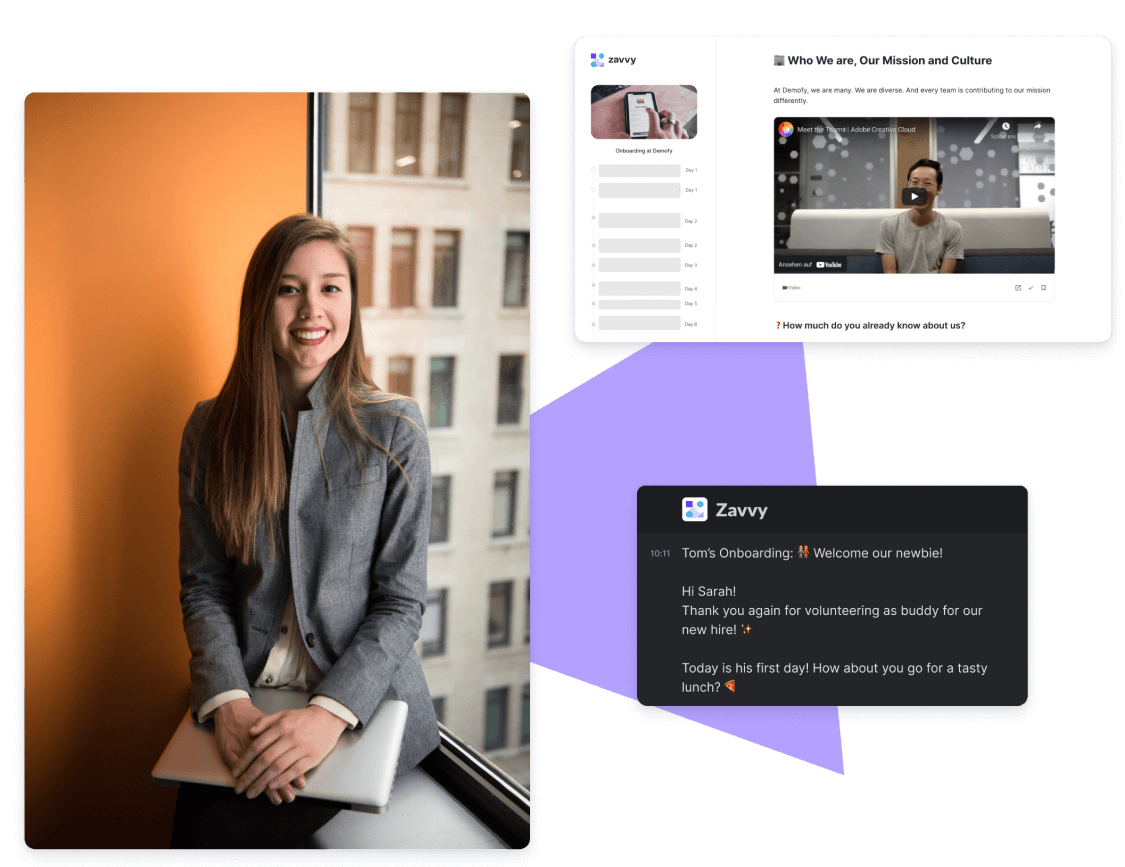



















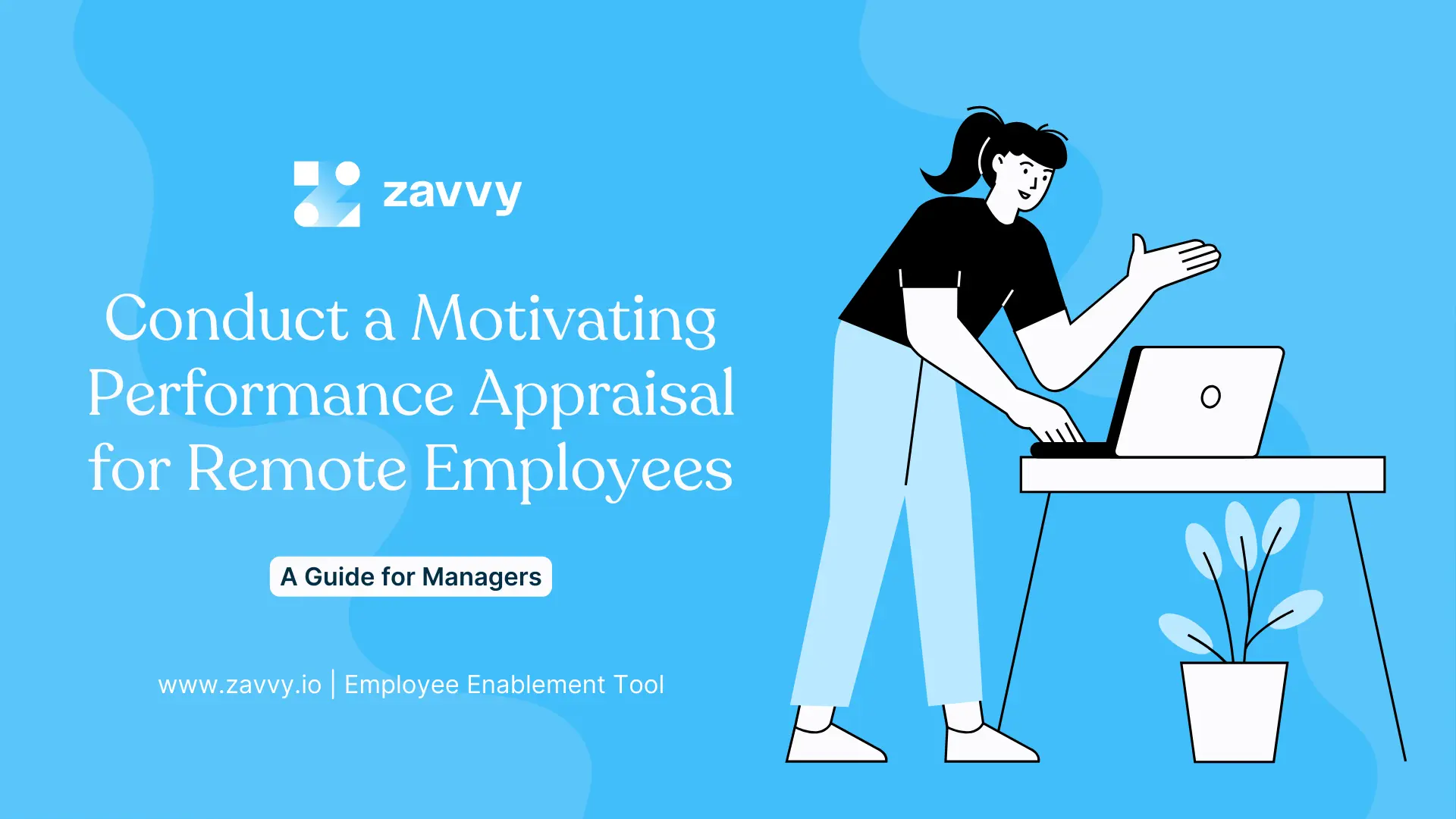
.png)







